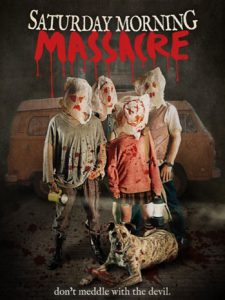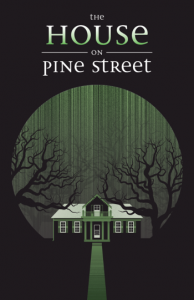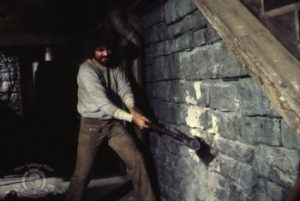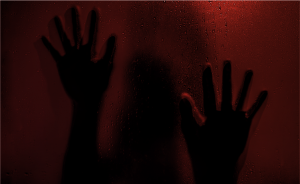The Tingler (1959) Review
The greatest of the “gimmicks”, Castle’s The Tingler is known more for delivering buzzes to unsuspecting viewers than any real scares, but the film is a fantastic watch even if your home isn’t wired for “Percepto”. The plot is at first glance improbably silly, and at second glance, strangely creepy, occupying hallowed ground in my youth: the aforementioned “tingler” is a centipede-like parasite that lives in the human spinal cord. The “tingling” sensation we feel when we’re afraid (“spine-tingling”) is the creature growing and curling around our spine. The spine will be crushed by the creature’s growth (“dying of fright”) if the terrified person does not scream. Silly. But to a little kid, that idea, of a parasite lying dormant inside my body, waiting to slice my spinal cord at the right moment of utmost terror, was surprisingly potent.
Deaf and mute Martha, who is really in the wrong movie for a mute, falls victim to the parasite after a series of terrifying hallucinations, explained away by the first-ever depiction of LSD in a film (then legal). As Martha’s terror grows, so does the Tingler. The black and white film is broken for a moment as red blood pours from her faucets, fills her tub, and eventually reaches out for her in a visually ingenious moment.
Of course, the real story about The Tingler is about Castle placing “buzzers” under the seats of a few patrons, buzzing them at a key sequence and encouraging the frantic patrons to scream for their lives. Paid shills would be planted in the audience to begin screaming and, in some of the larger theaters, fainting, carried outside by fake nurses to be loaded into fake ambulances. Spare no expense. The entire gimmick added a reported $250,000 to the film’s budget, but also cemented it in Hollywood legend.
This ingenious bit of shock-tactic would be impossible today—someone would definitely sue for “pain and suffering”– and gimmicks are now relegated to over-bloated 3D films. Still, watching The Tingler, I’m reminded of the best that campy horror can be: bizarre, improbable, creepy, and endlessly enjoyable.
Is The Tingler a serious horror classic? No—of course not. It’s about a worm that lives in your spine for god’s sake. But is it one of the strangest, most raucous, most memorable films of the late 1950s. It’s a throwback to a time when horror let loose the strangest, wildest fears and hallucinations of the human mind and cemented them in celluloid black and white (with a touch of red). It was a time when Vincent Price was the Master, and you never knew what was going to happen when you walked into a William Castle movie and sat down in a strangely buzzing seat.
It was the year following The Tingler that Alfred Hitchcock released Psycho, with its own notorious bath-set scene, but would still be a good deal of time before horror films were really taken seriously by critics. It’s a very good thing that these days, we see horror as art, as social commentary, and as high entertainment: something to be written about, documented, and analyzed.
But there’s something to be said for a movie like The Tingler, that’s so silly, so self-aware, and so far ahead of its time that it doesn’t quite know what to do with itself. Here’s the lesson for young filmmakers today: be bold, be outlandish, throw out reality, and scream! Scream for your lives!
“Ladies and gentlemen, please do not panic. But scream! Scream for your lives! The Tingler is loose in this theater!”




![Love in the Time of Monsters [Review]](https://www.horror-movies.ca/wp-content/uploads/2021/04/Love-in-the-Time-of-Monsters-Poster-350x531-1-198x300.jpg)
![Fantasia 2018: Puppet Master: The Littlest Reich [Review]](https://www.horror-movies.ca/wp-content/uploads/2021/04/PMLR12-UDO-KIER-350x216-1-300x185.jpg)
![[Horror Short Review] Cindy Maples’ Random](https://www.horror-movies.ca/wp-content/uploads/2021/04/Random-Poster-350x524-1-200x300.jpg)







